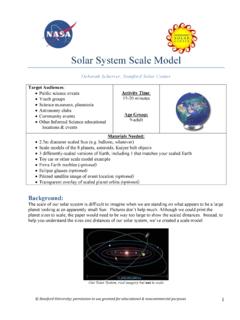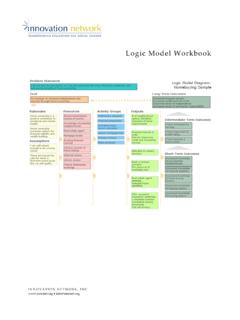Transcription of Copyright: James Campbell & Enda Whelton www.edco.ie ...
1 Copyright: James Campbell & Enda Whelton LEAVING CERT. GEOGRAPHY SRPS. MODEL. ANSWER. BOOK. 1. Copyright: James Campbell & Enda Whelton Copyright: James Campbell & Enda Whelton CONTENTS. PHYSICAL GEOGRAPHY SECTION 1 Page 3. 1. The Restless earth Page 4. 2. Earthquakes Page 7. 3. Volcanoes Page 10. 4. Folding & faulting Page 14. 5. Rocks Page 16. 6. Weathering Page 20. 7. Karst Page 22. 8. Rivers (fluvial processes) Page 25. 9. Coastal processes (sea) Page 26. 10. Glacial processes (ice) Page 27. 11. Mass movement Page 28. 12. Isostacy & fluvial adjustment Page 30. 13. Human interaction with surface processes Page 31. 14. Weather & weather maps Page 34. REGIONAL GEOGRAPHY SECTION 2 Page 35. 15. Regional introduction Page 36. 16. Region 1: Peripheral Irish region ( ) Page 37.
2 17. Region 2: Core Irish region (South & East) Page 43. 18. Region 3: Peripheral European region (Mezzogiorno) Page 50. 19. Region 4: Core European region (Paris Basin) Page 53. 20. Region 5(A): Continental/sub-continental ( USA) Page 58. 21. Region 5(B): Continental/sub-continental (India) Page 63. 22. Types & complexities of regions Page 67. MAPS, AERIAL PHOTOGRAPHS & GRAPHS SECTION 3 Page 79. 23. Maps and aerial photograph skills for short questions Page 80. 24. Maps and aerial photograph skills for long questions Page 81. 25. Graphs, charts and satellite imagery Page 86. HUMAN ELECTIVE SECTION 4 Page 87. 26. Population Change Page 88. 27. Overpopulation Page 96. 28. Migration Page 102. 29. Settlement Page 106. 30. Urban Settlement Page 110.
3 31. Problems with urbanisation Page 112. ECONOMIC ELECTIVE SECTION 5 Page 117. 32. Introduction Page 118. 33. Economic development Page 119. 34. Levels of development change over time Page 123. 35. Globalisation & multinational companies Page 127. 36. Ireland & the European Union Page 132. 37. Environmental impacts Page 136. 2. Copyright: James Campbell & Enda Whelton Copyright: James Campbell & Enda Whelton PHYSICAL. GEOGRAPHY. Section 1. 3. Copyright: James Campbell & Enda Whelton Copyright: James Campbell & Enda Whelton CHAPTER 1. THE RESTLESS EARTH. EXERCISE 1. Read the introduction and fill in the blanks to the restless earth page 10 and 11 of the workbook EXERCISE 2. Read the following sample answer and fill in the key points to your workbook on page 12.
4 SAMPLE QUESTION: WITH THE AID OF LABELLED DIAGRAMS DISCUSS THE PROCESS OF GLOBAL. CRUSTAL PLATE MOVEMENT? SAMPLE MODEL ANSWER 1: The Theory of Continental Drift proposes that the original land surface of the earth fractured and drifted for over 200 million years across the earth's surface, forming the continents. (1 SRP = 2 marks). The Theory of Thermal Convection explains the process of Global Crustal Plate Movement. (1 SRP = 2. marks). Water that is boiled in a saucepan expands and rises. As it rises it cools, flows sideways and sinks only to be reheated, repeating the process over again. (1 SRP = 2 marks). Plates move in exactly the same way. Hot rock rises from within the earth to the surface. It cools, flows sideways and sinks. The lateral movement drags the lithosphere with it.
5 This is the Theory of Thermal Convection. (1 SRP = 2 marks). The Theory was put forward by Alfred Wegner, a German meteorologist in 1915 who noted the following: 1) Matching Fossils Fossils of animals that could not have swam across oceans have been found in different continents, indicating that the continents were once all joined together and that the animals could walk from one continent to another. (1 SRP = 2 marks). The species dispersed when the continents were connected and later carried to their present positions when the continents drifted. A fern, glossopteris, was found on the continents of South America, Africa, India and Australia. If the continents are reassembled into Pangaea, the distribution of glossopteris can be accounted for over a much smaller geographic area.
6 (1 SRP = 2 marks). 2) Continental Fit Wegner argued that the similarities in the shapes of the continents particularly the shapes of the African and South American coastlines were proof of his theory. (1 SRP = 2 marks). 3) Matching Rocks and Mountain Ranges Many mountain ranges on the different continents are of comparable age, similar structure and rock type the Appalachian mountains of the USA and the Caledonian mountains of Ireland, Britain and Scandinavia (Fold Mountains). (1 SRP = 2 marks). Using this evidence he argued that the continents as we know them were all joined together forming a super continent, called Pangaea which was surrounded by an ocean, the Iapetus Ocean. (1 SRP = 2m). 4. Copyright: James Campbell & Enda Whelton Copyright: James Campbell & Enda Whelton 180m years Pangaea broke into two pieces Laurasia which carried Europe, North America and Asia and Gondwanaland which carried South America, Africa, India, Australia and the Antarctica.
7 (1 SRP = 2m). Laurasia and Gondwanaland drifted across the earth's surface moving between 2cms and 20cms per year. Overtime they broke up into continental landmasses that exist today. (1 SRP = 2 m). It was not until 1963 that the Theory of Continental Drift was accepted with the discovery of the Mid Atlantic Ridge. The existence of the Ridge proved that the oceans were spreading, pushing the continents around the globe. (1 SRP = 2m). (15 SRPs = 30m). EXERCISE 3. Read the answer to the question on divergent plate boundaries on pages 13 and 14 of the workbook and fill in the appropriate blanks. EXERCISE 4. Read the following sample answer and fill in the key points to your workbook on pages 14 & 15. SAMPLE QUESTION: WITH THE AID OF DIAGRAMS EXPLAIN WHAT HAPPENS AT A CONVERGENT.
8 PLATE BOUNDARY. IN YOUR ANSWER REFER TO ASSOCIATED LANDFORMS. SAMPLE MODEL ANSWER 2: Convergent Plate Boundaries (Boundaries of Destruction). At convergent plate boundaries plates collide. (1 SRP = 2m). When two plates collide the heavier plate is pulled downwards along the Benioff Zone beneath the other. (1 SRP = 2m). This process is called subduction. The subduction zone is the point at which subduction occurs.(1 SRP =. 2m). There are 3 types of Convergence: (1 SRP = 2m). 1) Oceanic Plate to Oceanic Plate When two oceanic plates collides the Pacific Plate and the Philippines Plate the heavier plate is subducted under the other. (1 SRP = 2m). The collision destroys the crust forming long deep narrow oceanic trenches. As the heavier plate is pulled downwards it heats up and melts forming magma.
9 The magma rises to the ocean surface in the form of a volcanic eruption forming offshore islands or island arches Japan. (1 SRP = 2m). The Mariana Trench has formed where the Pacific Plate collides with the Philippines Plate. The Mariana Trench is 11kms deep so deep that Mount Everest (8kms+) would fit comfortably into the Mariana Trench. (1 SRP = 2m). 2) Oceanic Plate to Continental Plate When an oceanic plate collides with a continental plate the heavier oceanic plate subducts beneath the lighter continental plate in a process called Subduction'.. The continental plate is buckled and deformed. (1 SRP = 2m). The subduction zone is usually marked by a deep ocean trench'. (1 SRP = 2m). The subducting oceanic plate begins to melt and disintegrate along the benioff zone' and eventually merges with the underlying magma.
10 (1 SRP = 2m). The collision forms volcanic mountains. The Andes were formed when the Nazca Plate was subducted under the South American Plate. (1 SRP = 2m). 5. Copyright: James Campbell & Enda Whelton Copyright: James Campbell & Enda Whelton The collision of an oceanic plate and continental plate may also result in faulting rocks are shunted forward and horizontally. The Gweebarra Fault in Donegal was formed in this way. (1 SRP = 2m). 3) Continental Plate to Continental Plate When two continental plates collide Fold Mountains are formed. (1 SRP =2m). When the Indian Plate collided with the Eurasian Plate the Himalayas were formed. The Himalayas lay under the sea but were forced upwards due to the collision. Consequently, they contain the fossilised remains of dead marine organisms.



